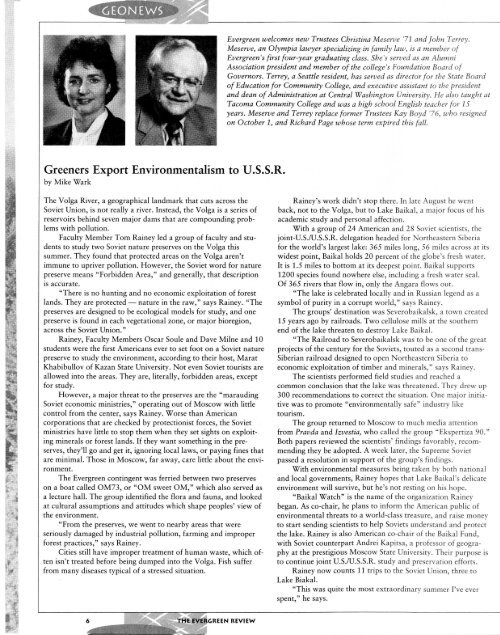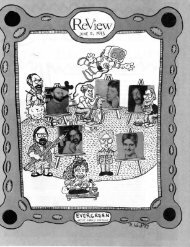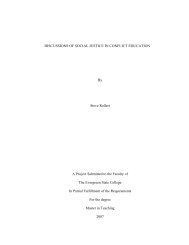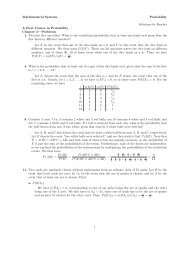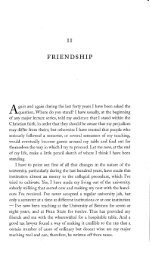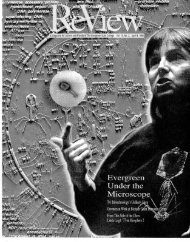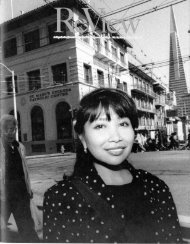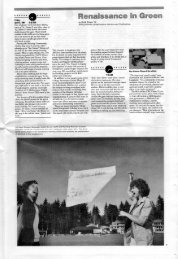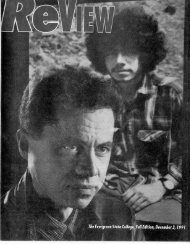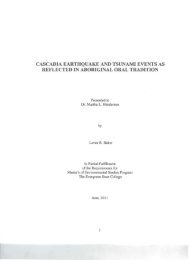V12 #1 November 1990 - Archives - The Evergreen State College
V12 #1 November 1990 - Archives - The Evergreen State College
V12 #1 November 1990 - Archives - The Evergreen State College
Create successful ePaper yourself
Turn your PDF publications into a flip-book with our unique Google optimized e-Paper software.
•Illl<br />
ACTIVIST<br />
by Ray Kelleher '88<br />
Walk into the Olympia office of the National Audubon Society and<br />
the first thing you notice is how hectic an operation it is these days.<br />
Reports and stacks of data fill the reception area chairs. A fax<br />
machine pours a stream of paper into a widening pool on the floor.<br />
Staff members swoop in and out of offices, jumping from telephone<br />
to computer terminal and back to the phone. <strong>The</strong>re are no visible<br />
signs of hierarchy: no receptionist chained to an eight-line phone, no<br />
closed, name-plated door at the end of the hall, and no neckties.<br />
Everybody seems to be doing everything.<br />
Another thing that's missing is the tension you might expect to<br />
find at this level of controlled chaos. When you look into the faces<br />
here you see enthusiasm, you get the feeling this place is on a roll.<br />
In fact, the whole environmental movement is on a roll these<br />
days. Issues of conservation that would have had trouble making the<br />
inside pages of the Sunday paper 10 years ago are front-page news<br />
today. <strong>The</strong> major story in the Pacific Northwest for the past two<br />
years has been the spotted owl controversy. Waste reduction and<br />
preservation of habitat are vital issues in every community. Being<br />
Good to the Earth has even become a popular advertising hook.<br />
America is thinking Green.<br />
For Argon Steel '86, Washington <strong>State</strong> coordinator for the<br />
Audubon Society, this is no time to be complacent. "We're like ants<br />
compared to the forces we're up against," he said, referring to big<br />
business interests and timber lobbyists. A recent proposal by the<br />
Bush administration to implement a spotted owl plan that would<br />
reduce next year's timber harvest by only 20% seems to bear him<br />
out. In any case, Steel is giving no quarter in the fight to save what<br />
little ancient forest remains.<br />
Steel's primary organizing tool is the Adopt A Forest Program<br />
which enlists volunteers to work directly with the National Forest<br />
Service monitoring sales proposals and logging practices in national<br />
forests near their homes. Steel maintains there's a contrived myth<br />
that the conservationists are all in the cities. "We have Adopt A<br />
Forest representatives in every Forest Service district in Western<br />
Washington." he says. "If I've been smart, it's in knowing that I<br />
needed to work with the people who live out there. That's why it's<br />
working."<br />
<strong>The</strong> largest room at the Audubon Society is used for cataloging<br />
and updating maps. <strong>The</strong> map room bears an unmistakable resemblance<br />
to a World War II Operations Bunker. Maps hang from the<br />
walls. A large conference table is covered with maps of different<br />
forest districts. Each map has two or three transparent overlays<br />
defining various tree communites and showing the changes that<br />
occur with harvests. Steel pulls an especially large map of the<br />
continued on page 15<br />
FALL <strong>1990</strong>


